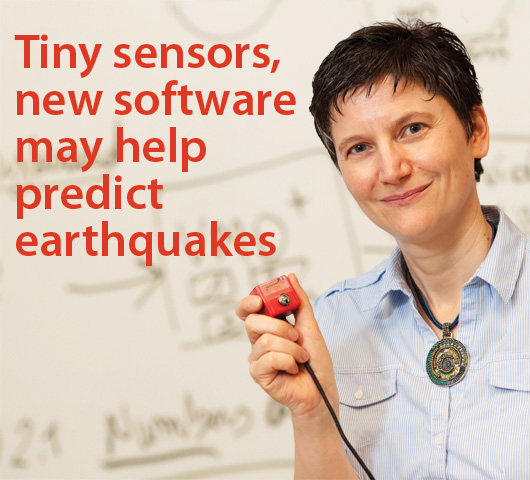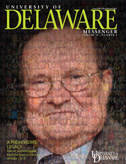
RESEARCH | Six thousand seismic sensors, 200 volunteers and a University researcher all have one thing in common—helping scientists study earthquakes.
Michela Taufer, assistant professor of computer and information sciences, is collaborating with researchers from Stanford University and the U.S. Geological Survey to implement a new network of seismic sensors aimed at arming communities with early earthquake detection and warning capabilities.
The sensors, no bigger than a Post-it note, are part of a new phase of the Quake-Catcher Network (QCN), a project gathering detailed data to help scientists understand the earthquake process and how to mitigate against its effects.
“We are honored that Jesse Lawrence from Stanford and Elizabeth Cochran from the U.S. Geological Survey turned to UD’s Department of Computer and Information Sciences for help in improving the QCN network,” says Taufer, a co-principal investigator on the project and the only computer scientist involved.
“Earthquake aftershocks pose an immense threat to humans after the main shock, but real-time testing of the sensors is impossible,” Taufer says, which is why she and her UD research team developed EmBOINC, a simulation software that emulates the architecture currently used by QCN to detect earthquakes—Berkeley Open Infrastructure for Network Computing (BOINC).
By examining the current QCN network’s data transfer statistics and running software simulation tests, Taufer says her group is able to determine the appropriate architectural changes needed to increase the speed and robustness of the network. The goal is to overcome current limitations to improve the software’s data processing capability and enable it to accommodate a larger number of sensors, from 1,000 sensors to 10,000.
Here’s how it works: Sensors are mounted to the floor in volunteer host locations such as homes, offices and classrooms across a geographic region, and then wirelessly connected to software running in the background of a nearby computer. When an earthquake occurs, this software registers and downloads the sensor data onto a central server where it can be analyzed by the Quake-Catcher team. The eventual goal is that the analysis will lead to advance warning systems for citizens in earthquake-prone areas.
“It’s cool that what we’re doing could someday help warn communities about an impending earthquake,” says Samuel Schlachter, an undergraduate computer engineering major contributing to the project.
Article by Karen B. Roberts, AS90





